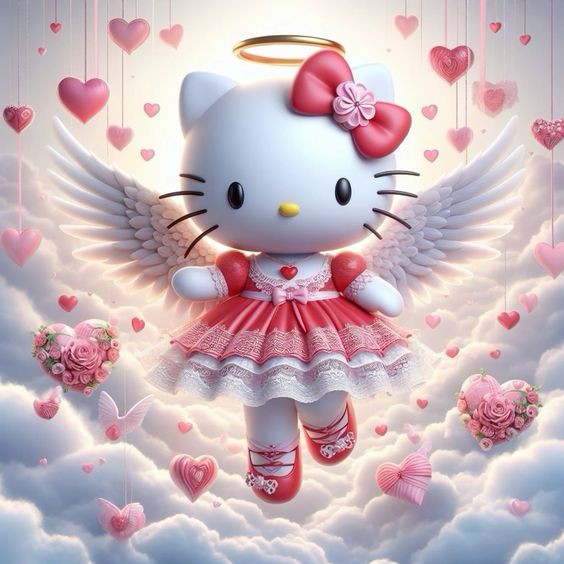Hello Kitty: An Icon of Global Pop Culture
Introduction
Hello Kitty, the iconic character created by Sanrio, has become a symbol of cuteness and charm that transcends cultural and geographical boundaries. With her simple yet endearing design—a white cat with a red bow and no mouth—Hello Kitty has evolved from a humble character in a Japanese company’s product line to a global phenomenon. This article delves into the origins, development, and cultural impact of Hello Kitty, exploring how this character has managed to captivate hearts worldwide and maintain relevance for decades.
Origins and Creation
Hello Kitty, known in Japan as “Kitty White,” was created by Sanrio designer Yuko Shimizu and introduced to the world in 1974. The character was initially featured on a vinyl coin purse, and its design was inspired by the desire to create a cute and appealing mascot. Sanrio, founded by Shintaro Tsuji in 1960, was known for its focus on creating whimsical characters that appealed to children and young adults. Hello Kitty was designed to be a symbol of cuteness and innocence, embodying the “kawaii” (cute) culture that was burgeoning in Japan during the 1970s.
The Design and Symbolism
Hello Kitty’s design is characterized by her simplistic features: a round face, a red bow on her left ear, and no mouth. This minimalistic approach was intended to make Hello Kitty a universally relatable figure. The lack of a mouth allows people to project their own feelings onto her, making her a versatile symbol of happiness, friendliness, and warmth. Her white color and bow signify purity and joy, aligning with the character's positive and cheerful image.
Expansion and Popularity
The 1980s saw Hello Kitty’s popularity skyrocket as she appeared on a variety of products, from stationery to clothing, toys, and even household items. The character’s appeal was not limited to children; Hello Kitty also garnered a significant adult fanbase, particularly in Japan and the United States. This widespread appeal can be attributed to Sanrio’s strategic marketing and the character’s ability to resonate with people of all ages.
In the 1990s, Hello Kitty’s presence became a cultural staple in various forms of media and entertainment. Her face adorned everything from backpacks to lunchboxes, and she became a popular figure in anime and manga. Hello Kitty-themed cafes, amusement parks, and even a dedicated television channel were established, further cementing her place in popular culture.
Global Impact and Cultural Influence
Hello Kitty's global reach is a testament to her universal charm and the effective marketing strategies employed by Sanrio. The character has appeared in various international markets, each time adapting to local cultures while retaining her core essence. For instance, in the United States, Hello Kitty became a symbol of pop culture through collaborations with high-profile brands and celebrities. Her image has been used in fashion, music, and even high-end art collections.
The character’s influence extends beyond consumer products. Hello Kitty has been involved in numerous philanthropic endeavors, including collaborations with charities and organizations. Her role in promoting positive messages and supporting charitable causes has contributed to her enduring popularity and respect.
Merchandising and Collaborations
Sanrio’s approach to merchandising has been a significant factor in Hello Kitty’s success. The character has been featured in collaborations with major brands and designers, such as Vans, MAC Cosmetics, and Swarovski. These collaborations have introduced Hello Kitty to new audiences and revitalized interest in the character through limited-edition products and unique designs.
Moreover, Hello Kitty’s presence in pop culture has been enhanced through partnerships with entertainment franchises and media companies. She has appeared in video games, movies, and television shows, broadening her appeal and integrating her into various aspects of contemporary entertainment.
Legacy and Future
Hello Kitty’s legacy is marked by her ability to remain relevant and beloved across generations. Her simple design and positive image have allowed her to adapt to changing trends while maintaining her core identity. As a cultural icon, Hello Kitty continues to inspire new generations and remains a symbol of joy and cuteness in a rapidly changing world.
Looking ahead, the future of Hello Kitty seems bright. Sanrio’s commitment to innovation and maintaining the character’s relevance ensures that Hello Kitty will continue to evolve while retaining the qualities that have made her a beloved figure worldwide. Whether through new merchandise, media appearances, or collaborations, Hello Kitty is likely to remain a cherished icon for years to come.
Conclusion
Hello Kitty’s journey from a simple coin purse design to a global cultural phenomenon is a remarkable story of branding, marketing, and cultural adaptation. Her ability to resonate with people across different ages and cultures highlights the power of simple, yet profound, design and character creation. As Hello Kitty continues to charm and inspire, she stands as a testament to the enduring appeal of cuteness and the universal desire for positivity and joy.c






